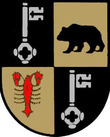Welcome to Bernkastel-Keus, one of our absolute favorite places in Germany, our second home over the years.
To log your find:
Post a photo at the coordinates with your log,* of you, your GPSr, or a personal item at or near the coordinates. Most of the year, it can be with the fountain, the Spitzhäuschen, or even wearing the manacles at the Rathaus. But during the Christmas market season, you can include the Advent calendar in the background if you like.
*If you would prefer to message your photo privately instead of posting it to your log, that's fine.
If you are part of a group, there is no need to post or send the same photo twice. But please indicate in your log what other cachers were with you.
A short history
Humans have settled in this area for at least five thousand years. Archaeologic evidence points to a Roman fort Princastellum around 400 AD, located near the castle on the hill, Burg Landshut. Bernkastel was first mentioned in documents in the 11th century. A centrury later, work began on the third castle nearby, Beronis castellum, and the area's wine culture was first mentioned. The town of Bernkastel was officially recognized in 1291 and received its first coat of arms, with two bears and Saint Peter's keys to heaven. In 1951, one of the bears was replaced with a crayfish, to represent Bernkastel's merger with Kues on the opposite bank. It symbolizes the philosopher Nicolas of Kues, whose family name was Krebs (crab).

The legend of the "Bernkastel Doctor" dates to 1356. Archbishop Boemund II was made an Elector by Emperor Charles II's "Golden Bull," but he was very ill, and no doctors could find a cure. An elderly knight from Burg Hunolstein visited the bishop, who was staying at Burg Landshut, and brought a keg of Bernkastel wine. The bishop was afraid the keg held yet another useless, bitter medicine. But when the knight tapped the keg, the bouquet of the wine filled the room. The bishop sat up, drained his glass, and immediately felt better. He called the wine the "Bernkastel Doctor," a name still celebrated today.

Drink in the history! Literally! You are standing in the old Marktplatz, or market square. The beautiful Fachwerk houses are hundreds of years old.
The oldest remaining building in town is just to the south, the mushroom-shaped Spitzhäuschen ("little pointed house"), built in 1416. This house was purposely built with a smaller ground floor and larger upper stories for two reasons: to keep the street wide enough for wagons to pass through, and perhaps more importantly, taxes at the time were based on the size of the foundation! It's now a cozy Weinstube (wine bar).
The Rathaus (town hall) and the Michaelsbrunnen fountain at the coordinates both date to the early 1600s. To the north, at optional WP1, you can find the last remnants of the city wall, the Graacher Tor, built in 1300.
We would argue that nearly any time of year is a good time to visit, but our two favorites were autumn and December. In autumn, the leaves blaze with color, and if you time it right, you can enjoy some Federweißer ("feather-white," fizzy, partially fermented Riesling juice), Zwiebelkuchen (a pie made with onions and Speck bacon), and a nice supper of Hirschedelgulasch (venison goulash). In December, during the Weinachtsmarkt (Christmas market), the windows of the half timbered houses on the northwest corner of the Marktplatz become an Advent calendar!
Virtual Rewards 2.0 - 2019/2020
This Virtual Cache is part of a limited release of Virtuals created between June 4, 2019 and June 4, 2020. Only 4,000 cache owners were given the opportunity to hide a Virtual Cache. Learn more about Virtual Rewards 2.0 on the Geocaching Blog.
